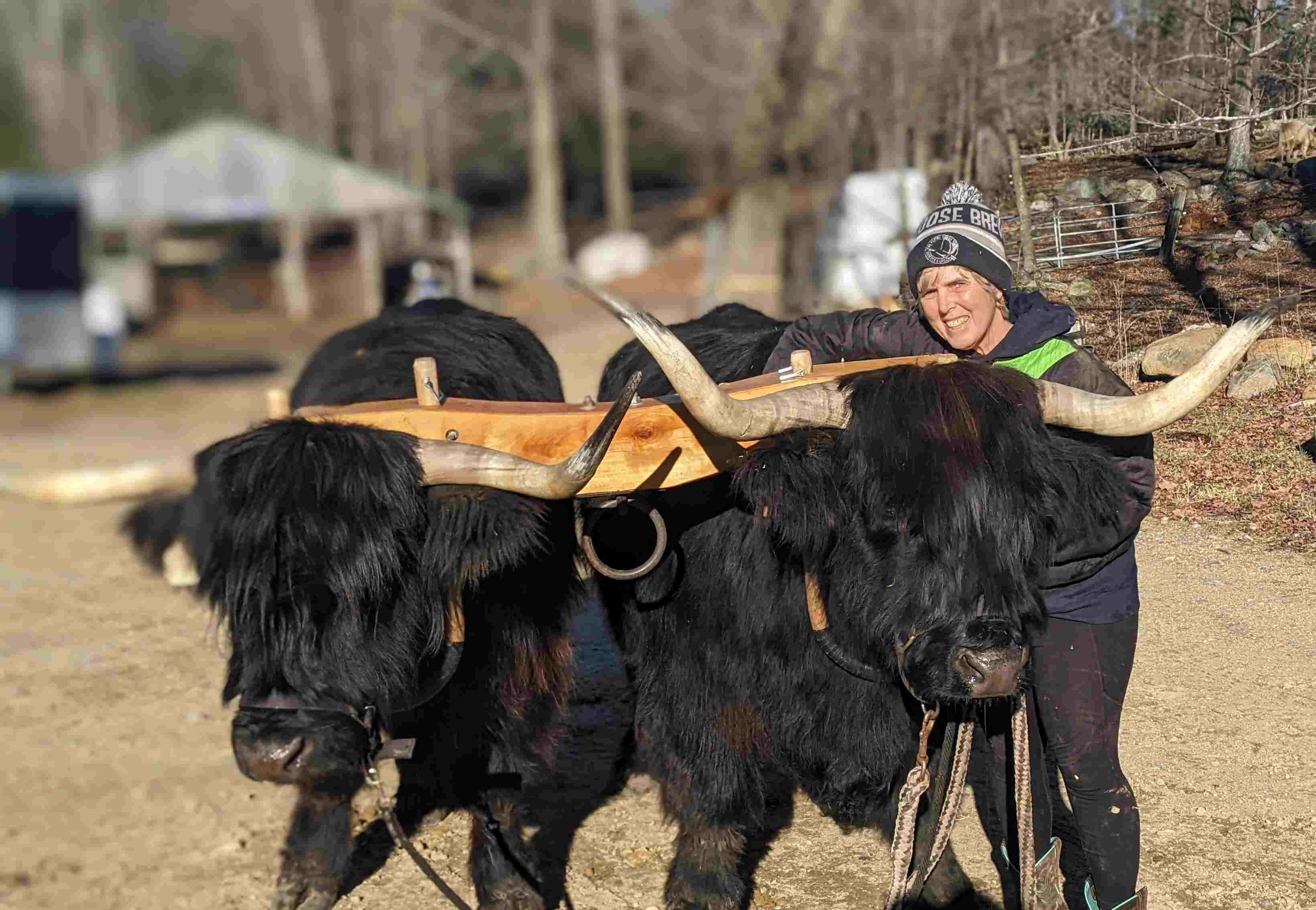Summertime and the Living is Easy -- Mostly
posted on
June 28, 2020

A Miles Smith Farm Scottish Highlander cow named Maya, grazes with her calf at her side. The cows are bred now so that they have their calves in nine months; in the Spring.
Thirteen of our 15 expected calves have been born, mostly without incident. Last year's calves are getting fat on summer grass and the vegetable scraps we collect twice a week from Shaw's in Gilford. Twenty-eight head graze at two different remote pastures, and our Scottish Highlander bull is back at the farm for a rendezvous with our Highlander cows and heifers.
The farmer (me) can leave the house without gloves, six layers of clothes, and a Russian-style fur hat. It's summertime! Now that we are in the midst of a heatwave, it's hard to remember when the diesel truck won't start because it was too cold. While we don't have to deal with freezing weather, we do have to deal with an evil predator -- the common fly. Ticks are irritating and plentiful, but not the hazard to cattle that they are for humans.
A calf's mother will work tirelessly to dry her newborn calf. It's an essential part of mother/baby bonding, but it's also vital for the calf's health. But rain or heavy dew can undo Mom's drying efforts. In the first days of life, a calf can't regulate its temperature, so if the weather is cold and damp, the calf will be chilled and wet – creating the perfect habitat for maggots. (I hope you aren't reading this over lunch!) Flies will lay their eggs on the calf, and in no time the damp calf will be covered in creepy-crawling larvae.
The condition is called "flystrike." Once infested, the calf will absorb toxins from the larvae. If the problem is discovered soon enough, the calf can be saved by removing the maggots, clipping the calf's hair and, in extreme cases,
administering antibiotics. I have been able to save five or six calves but have also lost two over the years. Calves born in warm weather – July and August – are particularly susceptible, so it is essential to watch for this condition.
Flystrike is extreme, but flies can also make cattle miserable and cause them to lose weight. Cows that spend all day plagued by flies on their faces and bellies will walk around the pasture looking for relief rather than grazing and getting fat.
Rotational grazing can help. Flies thrive in a pasture with livestock because they depend on their hosts – cattle. So, move those cattle to a new, far away field, and the flies will die or leave.
Another fly-control method is bug repellent. We pour a small dose of this substance on the back of each cow. One application can keep flies away for up to six weeks and is more potent than bug repellent for humans. Some farmers will equip a pasture with a cloth tube stuffed with absorbent material and doused with fly repellent. Cows will scratch their backs against the tube, picking up bug repellent in the process. But no matter what you do, flies are a seasonal fact of life on the farm.
Even so, I love the summertime. Water stays liquid, fingers don't freeze, and the grazing is easy. Let's focus on that!



